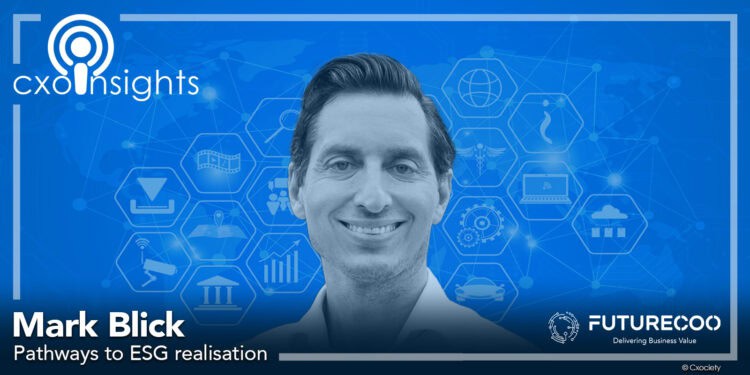In 2025, Environmental, Social, and Governance (ESG) considerations will be crucial for operational leaders in Asia as businesses face increasing pressure from regulators and investors alike. According to a recent McKinsey report, companies prioritising ESG practices are projected to outperform their peers by 20% in the next decade.
Governments across the region are implementing stricter regulations, making ESG compliance not just a choice but a necessity. Collaborations with major banks and rating agencies enhance credibility while technology streamlines reporting processes.
Embracing ESG is a strategic imperative and a pathway to sustainable growth and competitive advantage in the evolving market landscape.
Understanding ESG in the Asian context
Mark Blick, CEO of Diginex, clarifies that while ESG principles are universal, their interpretation and implementation vary. He likens the understanding of ESG to the "Rorschach test," where different individuals perceive the same concept differently.
"If I say ESG to a sustainability manager... they're going to think ESG is all about helping to meet global climate goals," says Blick. "If I say ESG to a CFO, this is around how do I not get in trouble with regulators? I need to meet my ESG reporting requirements. If I say ESG to a bank, how do I allocate capital in sustainable finance and green finance products?"
This divergence underscores the need for a unified understanding within organisations.
Blick suggests reframing ESG as "non-financial risk indicators, " encompassing a range of factors relevant to a company's industry, size, and geographic location. These indicators complement traditional financial metrics, providing a comprehensive view of a company's performance and risk profile.
Overcoming barriers to ESG adoption
According to Blick, one of the primary barriers to ESG adoption is emotional rather than technical. He notes that many companies, tiny and mid-cap enterprises, feel overwhelmed by the complexity and perceived burden of ESG reporting.
"Most companies... have 70 to 80 per cent of the data required to complete their ESG disclosures within their operations already," Blick states, but "more often than not, it's driven by emotions like fear... a fear of, I don't know what this is."
A legacy perception of ESG compounds this fear as an extension of Corporate Social Responsibility (CSR), viewed as a non-core activity involving superficial initiatives rather than a strategic imperative.
To overcome these challenges, companies need to recognise the tangible benefits of ESG. Blick argues that ESG is "a great way to attract new investors, access cheaper forms of capital, connect with the global supply chain, and grow your company." Shifting the focus from compliance to growth can dissipate the reluctance often associated with ESG initiatives.
Navigating the ESG ratings landscape
ESG ratings play a crucial role in attracting investors and demonstrating a company's commitment to sustainability. However, the current ratings landscape is far from consistent. Blick points out that the correlation between different ESG rating providers is only around 0.3, in stark contrast to the 0.97 correlation in credit ratings.
"So, once you get from one ratings provider, you are more likely than not to get a different rating from another provider," he explains. This discrepancy arises from variations in the measurement, scope, and weighting of ESG indicators.
The lack of standardisation can lead to paradoxical situations, such as Philip Morris receiving a high ESG score while Tesla receiving a low score, despite differing perceptions of their societal and environmental impact. Therefore, businesses must approach ESG ratings cautiously and focus on transparently communicating their ESG performance based on relevant and material indicators.
Leveraging technology for streamlined compliance
Technology can significantly simplify ESG compliance and reporting. ESG reporting software guides companies through the process, offering recommendations and benchmarking against industry best practices. Blick compares this to using accounting software like QuickBooks for SMEs, which streamlines financial reporting.
However, he cautions against the misconception that technology can completely automate ESG reporting. "This is still an exercise that requires effort to produce a meaningful output," he stresses. Technology should be seen as a tool to facilitate data collection, analysis, and reporting, but not as a substitute for genuine engagement and strategic decision-making.
Strategic partnerships and regulatory influence
Collaborations with banks and regulators are crucial for accelerating ESG adoption. Blick describes regulators acting as the "stick," setting standards and enforcing compliance, while banks serve as the "carrot," incentivising sustainable practices through preferential financing.
He distinguishes between explicit and implicit regulations. "Explicit regulations, for example, in Hong Kong... there is a whole bunch of ESG disclosures which I am obliged to report on," Blick explains. Implicit regulations extend to private companies operating within the supply chains of larger corporations, which increasingly require their suppliers to meet ESG standards.
Future trends: AI and authenticity
Looking ahead, the integration of AI technology will reshape ESG reporting. AI can automate report writing and benchmarking by digesting documents and generating disclosures. However, Blick cautions against sacrificing authenticity for efficiency.
"The balance that we're looking at is the one between efficiency and the one between authenticity," he says.

"What I don't want is to make it so efficient that all companies have to do is click, click, click, done, here's your report, and it looks the same as a thousand other reports because that means the company actually hasn't engaged in anything substantive." Mark Blick
Advice for Asian organisations
Blick advises organisations in Asia to avoid being intimidated by large corporations' elaborate reports. Instead, companies should focus on identifying a core set of indicators most relevant to their business operations and strategy.
"Too often you see companies spend 95 per cent of their time on writing the report... What I'd much rather companies do is have the confidence to say that there are many important indicators to me, but I don't have the technical ability to do them now. I'm going to focus on 10 indicators which we think are critical to our business operations and strategy," he advises. Rather than seeing ESG as a mere compliance exercise, Blick urges companies to view it as "an exercise around corporate transformational change."
Click on the PodChats player near Blick and share some of his observations and suggestions for pathways to ESG realisation.
- Challenges in ESG Adoption – What are the key barriers preventing businesses from fully embracing ESG, and what strategies can they use to overcome them?
- Bridging Market Gaps in ESG Ratings – What challenges do businesses face in securing credible ESG ratings, and how can rating support services address these gaps?
- Differentiation in ESG Solutions – How can technology simplify ESG compliance and reporting processes?
- The Role of Strategic Partnerships – How do collaborations with major banks and regulators contribute to accelerating ESG adoption?
- The Future of ESG Investing & Technology – What emerging trends will shape ESG investment over the next 5-10 years?
- What is your advice for organisations in Asia regarding pursuing and progressing their ESG initiatives? Who should be part of the ESG process?



